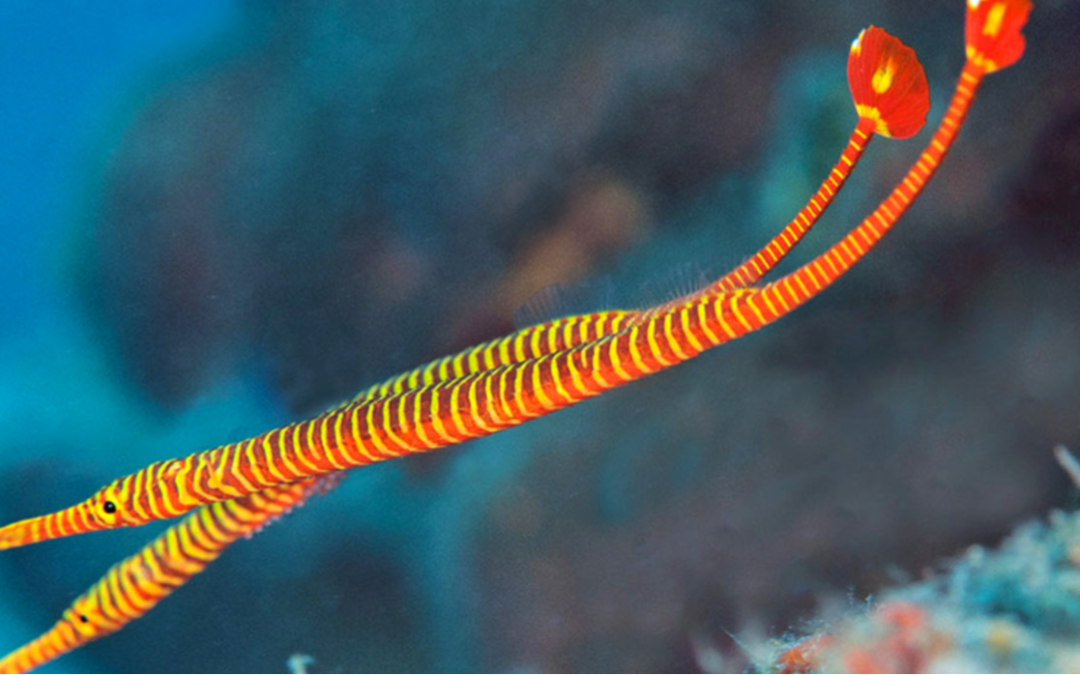This little creature is somewhat like a seahorse, but it is shaped like a tiny vertical pipe, 1/4 of an inch wide and 6 inches long. The pipefish can change its colors from brown to green to match the grass it is in.
It has special cells which send a signal to the brain, which then studies the message to determine the exact color of green, etc. Then a signal is sent to the pigment glands in the skin. The dark green pigment gland squirts out some dark green pigment. Or several glands will squirt out a combination of colors to provide an exact color-match to the background! That entire process takes about 20 seconds. Much other fish, as well as some reptiles and amphibians, can also do this.
Ocean currents move and sway the eelgrass, so the little pipe fish must move and sway with it also. Sensitive to grass movements, the fish sways back and forth with the grass.
Because the eelgrass is vertical, the pipefish swims vertically also, but if it wants to do so, it can just as easily swim horizontally. Only the pipefish and the sea horse routinely swim vertically.
Like the seahorse, the pipefish cannot open its mouth. It only has a small hole opening, so it must suck in its food.
When the mating time arrives, the female swims up to the male and lays her eggs in a pouch on his stomach. He carries the eggs till they hatch. The same process occurs with sea horses.
In the case of the seahorse, the female inserts eggs in the pouch of the male, where they are then fertilized, sealed and nourished for six weeks on his blood. The pregnant male then enters labor and 200-300 baby seahorses are born alive. We seemingly have an almost exact opposite of normal mating among animals!

